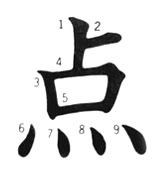I had actually intended to write this post almost three weeks ago, but (as was to be expected) I have only gotten around to completing it now. Well, the advantage is that I have more to say now than I did then, because I have just finished my first week of (proper) lectures. Before this week, there were two weeks of Brückenkurse -- optional courses designed to ease the transition into university.
The first week-long Brückenkurs was called "Mathematische Grundlagen für Informatik". In it, we were taught basic mathematical concepts that will play an important part in our studies. Specifically, we were introduced to logic (Boolean algebra, predicates, etc.), sets, relations (e.g. equivalence relations and classes), functions, and proofs (particularly proof by contradiction and mathematical induction). Few of the topics were entirely new to me, but the Brückenkurs was still very worthwhile. The professor presented the concepts comparatively formally and in an organized manner, so that I was able to form a clearer, more complete picture of the concepts and notation that I had already seen, as well as learning new things.
The second week-long Informatik Brückenkurs was less worthwhile, and I was only present two of the five days. >:o) It was meant to cover any questions we might have about everything from student organizations to remote access (VPN, Remote Desktop, and such) to employment opportunities to LaTeX and Linux. Most of these things can be learned just as well by looking at various university webpages or by simply trying them out (although it is certainly handy to have the PowerPoint slides from the Brückenkurs available for reference).
Speaking of PowerPoint, that was another thing that bothered me about the Informatik Brückenkurs. It seems that most Informatik professors use PowerPoint, and -- whereas I used to be neutral about PowerPoint -- I now have a distinct preference for blackboards (or whiteboards, I suppose, but I have yet to see one at the FU). The main problem with PowerPoint is that it is often assumed that students will be taking less notes or no notes at all (the slides, after all, are usually available on the internet). Since I happen to like writing my own (complete) notes during class, I dislike that arrangement.
In any case, the PowerPoint slides are distracting, especially when the professor writes more on the slides than he actually covers in class. Admittedly, it wouldn't be a problem if I had printouts of the slides in front of me, and if I read over the slides beforehand. But I don't want to. :o( Well, reasonable or not, I am glad that math classes, at least, tend to be taught on the blackboard.
Speaking of blackboards, it has been interesting to observe the different techniques and tools used to erase writing on the blackboard. In Canada, there were usually normal chalk erasers, sometimes accompanied by longer erasers. Here, there are sponges, accompanied (at least in one frequently-used lecture hall) by a squeegee. The professor for the first Brückenkurs used both expertly. He moistened the sponge (there is generally a little sink at the front for that purpose), wiped the board evenly and thoroughly, then removed excess water by passing the squeegee back and forth over the board. The result was a clean and nearly dry board. Other professors have been less adept. Some don't use the squeegee, while others don't apply the sponge evenly. Chalkiness increases and legibility falls accordingly.
Well, I suppose that is all pretty boring, but I do like blackboards. They have a charm that is not equalled by whiteboards and will never be equalled by PowerPoint.
The Brückenkurse, by the way, nominally took place from 10 to 16/17 o'clock daily. In truth, as is usually the case at the Freie Universität (and presumably at other universities), "10" really means "10 c.t." (i.e. 10
cum tempore, or 10:15).* In the first Brückenkurs, furthermore, the six hours were split into three two-hour blocks. The first and last blocks each included an hour and a half of lecture time, while the middle block served as a (very long) break. So, all in all, there were only three hours of lecture time each day -- hardly exhausting. The second class obviously didn't have seven straight hours of lecture either, but the daily schedule was less regular, and (as I said) I didn't attend every day, so I won't go into details (a relief, isn't it?).
* Note: "10 s.t." means "10
sine tempore", or "10:00"

